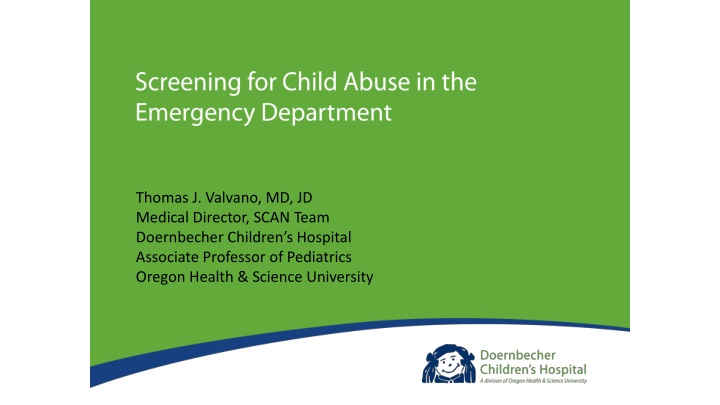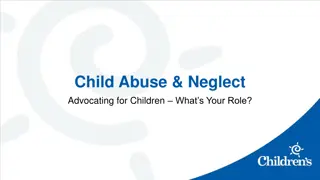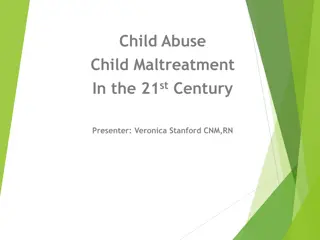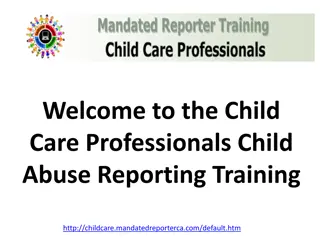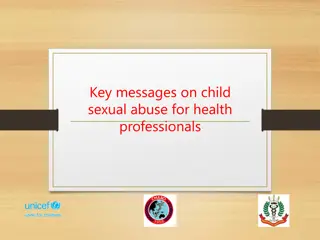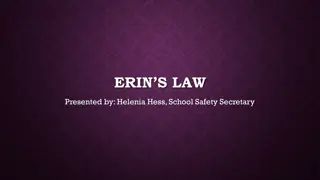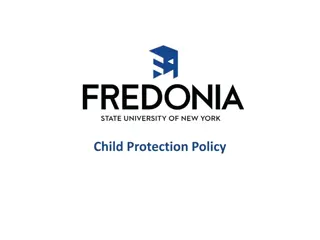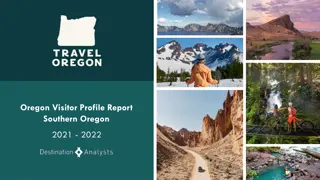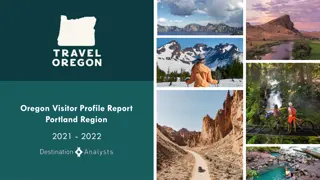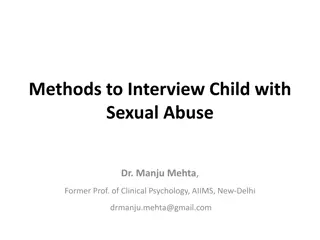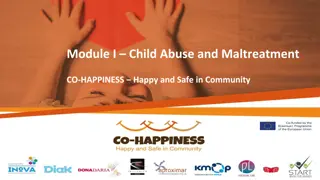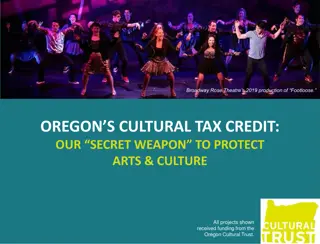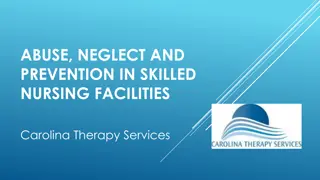Child Physical Abuse Incidence and Detection in Oregon
Dr. Thomas J. Valvano discusses the high incidence of child physical abuse in Oregon, highlighting the often unrecognized nature of these cases until severe injury or death occurs. He emphasizes the importance of early detection to prevent further harm. The presentation includes insights on missed diagnoses, potential signals of abuse, and the impact of systematic screening on detection rates.
Download Presentation

Please find below an Image/Link to download the presentation.
The content on the website is provided AS IS for your information and personal use only. It may not be sold, licensed, or shared on other websites without obtaining consent from the author.If you encounter any issues during the download, it is possible that the publisher has removed the file from their server.
You are allowed to download the files provided on this website for personal or commercial use, subject to the condition that they are used lawfully. All files are the property of their respective owners.
The content on the website is provided AS IS for your information and personal use only. It may not be sold, licensed, or shared on other websites without obtaining consent from the author.
E N D
Presentation Transcript
Thomas J. Valvano, MD, JD Medical Director, SCAN Team Doernbecher Children s Hospital Associate Professor of Pediatrics Oregon Health & Science University
Disclosure I have no actual or potential conflicts of interest in relation to this presentation.
Incidence Oregon, 2018 1487 incidents of child physical abuse (4 fatalities)
Incidence Oregon, 2018 1487 incidents of child physical abuse (4 fatalities) Often unrecognized until severe injury or death occurs.
Incidence Oregon, 2018 1487 incidents of child physical abuse (4 fatalities) Often unrecognized until severe injury or death occurs. Frequently present to emergency departments Nonspecific symptoms Seemingly minor injuries False or misleading histories
Incidence Oregon, 2018 1487 incidents of child physical abuse (4 fatalities) Often unrecognized until severe injury or death occurs. Frequently present to emergency departments Nonspecific symptoms Seemingly minor injuries False or misleading histories Missed diagnosis of abuse results in additional injury, death
Netherlands Escape Form Noa Is the history consistent? Yes Yesa Was there unnecessary delay in seeking medical help? No Noa Does the onset of the injury fit with the developmental level of the child? Yes/NA Noa Is the behavior of the child/the carers and the interaction appropriate? Yes Noa Are the findings of the top-to-toe examination in accordance with the history? Yes Yes*,a Are there any other signals that make you doubt the safety of the child or other family members? *If Yes describe the signals in the box Other comments below. No Other comments
Netherlands Screening rate for child abuse significantly increased Sharp increase after legal requirement for screening in all EDs Detection rate of suspected abuse was higher in children who were screened than in those not screened for abuse. Louwers EC, Korfage IJ, Affourtit, MJ, et al. Effects of systematic screening and detection of child abuse in emergency departments. Pediatrics 2012;130:457-464.
United Kingdom Flowchart sticker placed by nurse in notes of all injured children < 6 years Flowchart completed by doctor Consideration of intentional injury increased Increase in referrals for further opinion (not statistically significant) Benger Jr, Pearce A. Simple intervention to improve detection of child abuse in emergency departments. BMJ 2002;324:780.
Yale Phone consultation with CAP and in-person evaluation by SW: Children < 12 months: 1. Long bone fracture 2. Skull fracture 3. Rib fracture 4. Intracranial injury 5. Burn 6. Solid organ injury (laboratory or imaging evidence) 7. Bruising of ear, head, neck, torso 8. Subconjunctival hemorrhage 9. Frenulum tear 10. Hemotympanum
Yale Results Increase in CAP and SW consults Decrease in racial and economic disparity in CAP and SW consults, reports to CPS Increase in testing for nonaccidental trauma No increase in detection of abuse (small sample size and low prevalence of abuse) Powers E, Tiyyagura G, Asnes AG, et al. Early involvement of the child protection team in the care of injured infants in a pediatric emergency department. J Emer Med 2019;56:592-600.
OHSU Do not currently require mandatory SCAN consult for specific injuries Skull fractures/intracranial injury in infants under 12 months Bruises in nonmobile infants Fractures in children under 2 years No perfect and validated screening tool Detailed tools are lengthy and cumbersome Simple tools are not specific enough to be useful
Sentinel Injuries Minor abusive injuries that precede more serious abuse Sentinel injuries include: Bruises in non-mobile infants Oral injuries Subconjunctival hemorrhages Almost 30% of abused children had previous sentinel injury Sheets, LK et al. Sentinel injuries in infants evaluated for child physical abuse. Pediatrics. 2013;131:701-707
Ten-4 Bruising Clinical Decision Rule Children < 4 years old: Torso Ears Neck Anywhere on infant < 4 months old Pierce MC, Kaczor K, Aldridge S, O Flynn J, Lorenz DJ. Bruising characteristics discriminating physical child abuse from accidental trauma. Pediatrics. 2010;125(1):67-74. Epub Dec. 7, 2009. Erratum in Pediatrics. 2010;125(4):861.
Red Flags 1. No history or changing history 2. History inconsistent with developmental abilities 3. Mechanism inconsistent with injury 4. Other signs of abuse/neglect: Bruises, scars, old fractures Failure to thrive Prior injuries 5. Social risk factors IPV Substance Abuse
Suspected Child Abuse and Neglect (SCAN) Team Team comprised of: Physicians: Thomas Valvano, Tamara Grigsby Nurse Practitioner: Noelle Nurre, PNP Social Worker Available 24/7 in person or by telephone SmartWeb On Call Child Abuse Involve the SCAN team early: 503-494-4567 or 503-494-9000 (ask for on-call SCAN provider)
